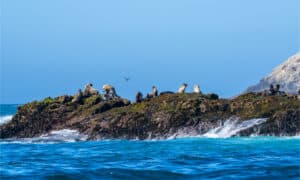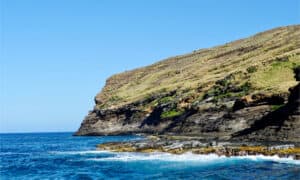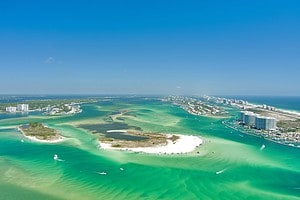Most people think of islands and immediately imagine a paradise. However, not all islands are warm wonderlands welcoming to tourists. Some don’t provide pleasant environments and others are almost impossible to get to.
Many islands around the world are remote yet they’re still relatively easy to visit because they have an airport or they can be accessed by boat year-round. The islands on our list lack these kinds of conveniences and are truly an adventure just to get near them.
Some of these islands are so out of the way or inhospitable that it’s a wonder that they were discovered at all. They have minimal infrastructure and few safety nets should something go wrong on your voyage to these inaccessible islands. If complete solitude is your jam, then these islands are paradise.
What are 5 of the most inaccessible islands that are almost impossible to get to? We’ll take a look at them and some characteristic details below.
5 Inaccessible Islands
These are 5 of the islands that are almost impossible to get to:
- Heard Island
- Bear Island
- Rockall
- Inaccessible Island
- Bouvet Island
1. Heard Island
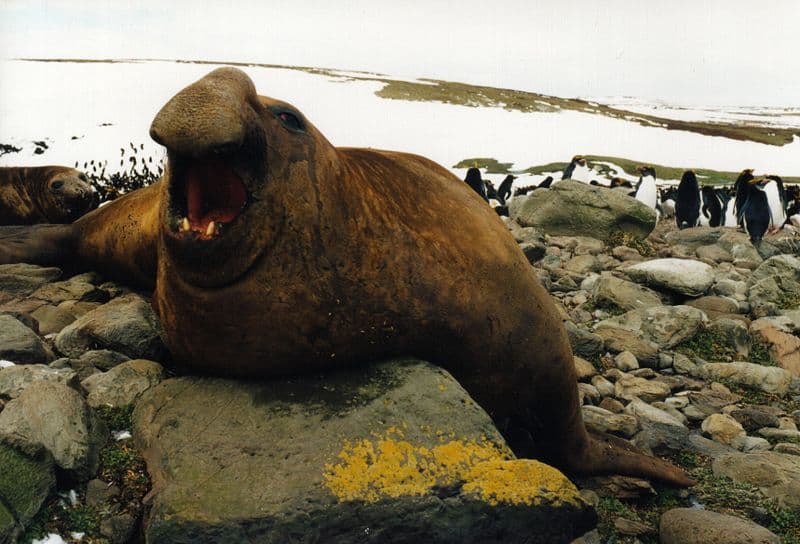
The robust animal life on Heard Island is supported by phytoplankton eating iron from volcanoes.
©B.navez / CC BY-SA 4.0 – License
Heard Island is in the Southern Indian Ocean. It’s closer to Antarctica than it is to Australia though it’s Australian. It’s 80% ice with sheer ice cliffs making up its edges. 41 glaciers occupy the island.
Australia’s only active volcanoes are on this island and one of the two volcanoes is the tallest mountain in Australia. The tallest mountain is named Big Ben. Heard Island and its partner McDonald Island nearby are formed by a hotspot in the same way as the Hawaiian islands.
No one lives on these islands and it takes about 2 weeks by sea to get there. There’s no other way to get to these islands. The island is home to volcanic activity which produces lava that is expanding the island every year.
There are some wetland habitats between the glaciers on the island. Elephant seals and penguins rely on these wetlands as breeding spaces. These ecosystems are fed by krill that take in the iron created by volcanic activity through phytoplankton. This provides for a great food chain around the island.
2. Bear Island

Svalbard is the closest settlement to Bear Island but it’s still 150 miles away by boat.
©Tetyana Dotsenko/Shutterstock.com
Bear Island is a part of Svalbard which is an archipelago north of Norway. It is one of the most remote, cold, and northerly areas of the world that is inhabited by humans. It’s 400 miles off Europe’s coast and a boat must be chartered to travel over 150 miles to the island after a flight to Svalbard’s capital. There are a few charters but it’s super remote.
It’s not recommended that you visit, though, because a shipwreck in 1989 has left the area contaminated. The ship was full of radioactive warheads that are still slowly leaking into the surrounding area.
3. Rockall

This granite rock jets out of the ocean with steep sides.
©Andy Strangeway / Creative Commons – License
At 70 feet tall, Rockall is the very top of an extinct volcano and it jets out of the sea dramatically. The waves that batter Rockall can be 95 feet tall. It’s jet black in appearance because it’s made of granite.
The only way to this island is by chartering a private boat but the chances that the boat will be able to get close are low. The island is more than a few hundred miles away from the mainland. Less than 20 people have ever stepped foot on Rockall. One man in 2014 managed to occupy this rock for 45 consecutive days.
Seabirds sometimes nest here and mollusks call the rocky terrain home.
4. Inaccessible Island

Inaccessible Island is home to its own endemic animals.
©iStock.com/Grant Thomas
This island is accessible on one of 10 excursions per year that take 6 days to complete. It’s around 1,700 miles off of the west coast of South Africa. It’s owned by the British and the waters around the island make it accessible only 80 days out of the year.
This is one of the most remote inhabited islands in the world and it is home to a large volcano. Before you can go to the island, you’ll have to appease the local government to get permission to make landfall.
The Wilkin’s finch lives on this island and its other home is another island in the archipelago. There is also a bird that’s endemic to Inaccessible Island. It is called the Inaccessible Island rail and it’s the smallest flightless bird in the world.
More sea trash makes its way here every year which reflects that the amount of plastic in the oceans is increasing. There are two other islands near this one, but this one is the most inaccessible which is how it earned its name. Inaccessible Island is older than the largest island and younger than the smallest island near it.
5. Bouvet Island
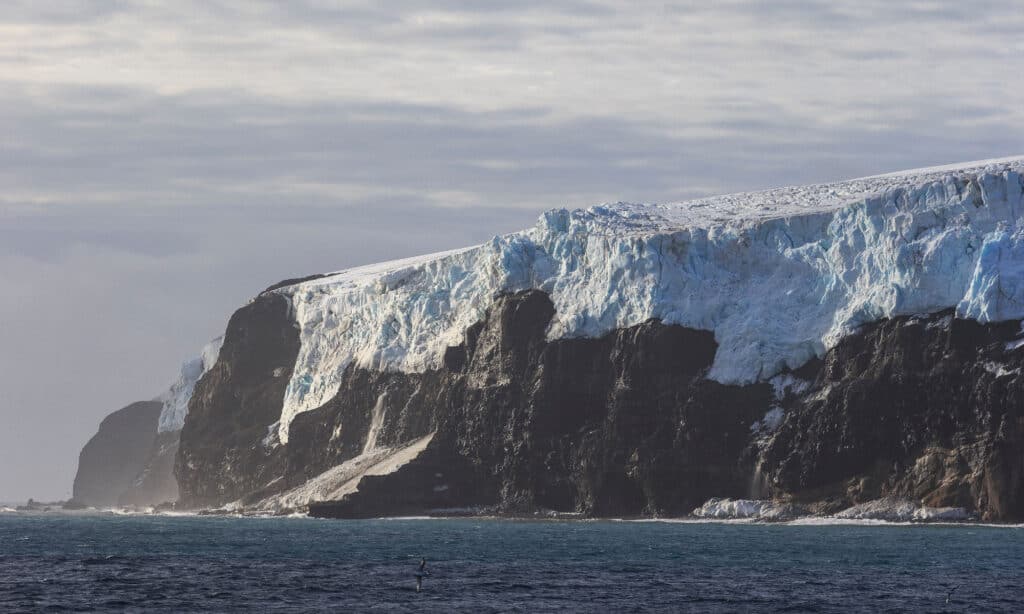
Even though only 7% of Bouvet Island isn’t covered in glaciers, animals use the remaining land as a breeding ground.
©Nodir Tursunzade/Shutterstock.com
This is the most remote uninhabited island in the world. Norway owns it but researchers are the only ones that head to this location. It’s 1400 miles away from any civilization.
They have to use a helicopter since landing a boat is impossible. It’s swamped in huge sheer glaciers that are hard to approach. Only 7% of the island isn’t covered by ice.
Bouvet Island is at the top of a shield volcano which means it has gradually rising slopes due to the kind of lava that comes out of the volcano. The center of the island hosts the volcano which is filled with ice in its dormancy.
It’s a bird sanctuary for migrating seabirds that use the area as a breeding ground including a variety of penguins. Seals hang out on the island and whales frequent nearby waters. The most commonly seen whales are humpback whales and orcas.
This island has been the setting that writers chose for 3 different books and a movie. Its remote location, and the story of a marooned lifeboat with no passengers, add a mystique to the island that artists gravitate toward.
The photo featured at the top of this post is © iStock.com/Grant Thomas
Thank you for reading! Have some feedback for us? Contact the AZ Animals editorial team.



